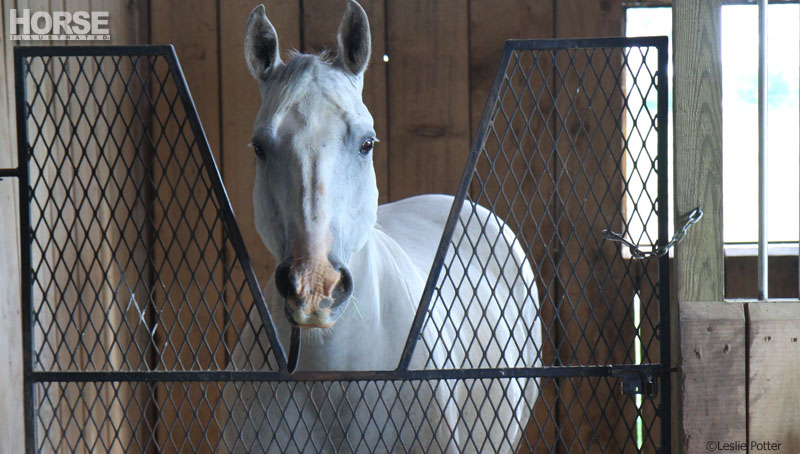The equine herpes virus (EHV-1) outbreak throughout the western United States and Canada in the spring of 2011 put horse owners on edge. While this strain of herpes virus usually affects the respiratory tract or causes abortion in pregnant mares, it can also cause a neurological disease, referred to as equine herpes myeloencephalopathy (EHM).

Mutation of the DNA in the herpes virus produces this extremely virulent neurological form, which damages blood vessels in the central nervous system. Subsequent damage to the spinal cord tissues and brain is accompanied by specific neurological signs.
How EHV Works
Horses often contract the herpes virus at a young age but do not always develop apparent clinical signs at that time. Like herpes infections in humans, the virus often goes dormant but can resurface when the horse is stressed by training, transport, competition, herd dynamics, or other health conditions.
Re-activation of the latent virus results in active shedding of the virus in the horse’s nasal secretions. Even a healthy-looking horse can transmit the EHV-1 virus from his respiratory secretions. Horses with clinical signs shed viral particles profusely and should be isolated immediately.
Direct horse-to-horse contact facilitates exposure, but the virus can also be transmitted on peoples’ hands, clothing and shoes, as well as grooming equipment, tack, buckets, rakes, hoses and water tanks, to name a few. It is also possible for airborne particles expelled by coughing or sneezing to transfer to horses some distance away, although no one knows exactly how far.
Vaccines are available against the EHV-1 virus, but because neurological manifestations rely on viral gene mutation, the currently available herpes vaccine won’t stimulate protective antibodies against the neurological disease. However, some value can be achieved from immunization, as EHV-1 vaccines have been proven to reduce the nasal shedding that facilitates viral spread.
Prevention During an Outbreak
In the face of an outbreak, the best prevention relies on diligent biosecurity strategies:
- Keep your horses at home until the epidemic has run its course.
- Don’t introduce new horses to your property for any reason.
- Avoid mixing groups of resident horses on your property—keep herds and groupings the same.
- For horses that have been exposed, check rectal temperatures twice daily. At the first sign of a fever, you can take proactive steps to identifying and isolating a suspect horse. A fever is usually the first sign of infection, and a horse with a high fever (above 103.5 degrees Fahrenheit) is more likely to develop EHM.
- Isolate any suspect horses and contact your veterinarian immediately. Designate specific personnel to handle only suspect or sick horses.
- Don’t share any tack, buckets, grooming tools, et cetera between horses, since the virus can be spread through contaminated objects.
- Wash your hands between handling horses, and/or wear disposable gloves.
- Change contaminated clothing and shoes before entering stabling or handling other horses, and/or use disinfectant foot baths.
- Minimize horse stress as much as possible through good management practices.
In general, 28 days after the last active case of EHM has surfaced, it should be reasonably safe to co-mingle horses again. Consult with your veterinarian, as this time frame may be modified to fit individual circumstances. If horse owners respond quickly in the face of an outbreak with proper biosecurity measures and constraints on horse movement, this infectious disease may be curtailed and quickly pass.
Symptoms of EHV-1
The incubation period for EHV-1 is rapid, with clinical signs of respiratory disease (such as nasal discharge and coughing) and fever appearing within a couple days, and neurological signs showing up over the next 10 days following the fever.
Neurological symptoms can include:
- Ataxia (incoordination)
- Hind limb weakness
- Difficulty defecating or urinating
- Urine dribbling or incontinence
- Diminished tail tone
- Extreme lethargy
- Recumbency and inability to rise
Risk Factors for EHV-1
If there is news of an outbreak in your area and known exposure of a group of horses, with some of them developing the neurological form of the disease, keep your horses on the farm and avoid any co-mingling on trails or at events.
You can resume going to shows and other group events 28 days after the appearance of the last active case.
This article originally appeared in the August 2011 issue of Horse Illustrated. Click here to subscribe.





